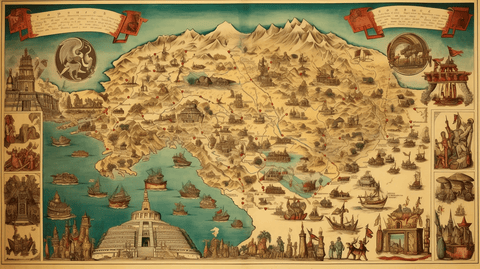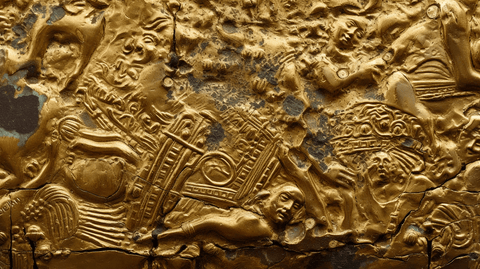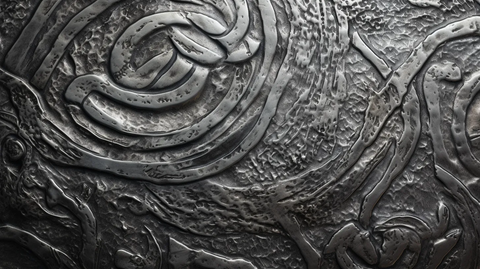
Inca Empire: Artifacts from the Empire of the Sun (1200CE - 1533CE)
Journey into the heart of the Andes with our collection of genuine Inca artifacts. Experience the legacy of an empire that built monumental fortresses, intricate road networks, and revered the Sun God, Inti.
The Inca Empire - the largest empire in pre-Columbian America, emerged in the early 13th century and lasted until the Spanish conquest in the late 16th century. Centered in the Andean region of present-day Peru, the Inca civilization is celebrated for its architectural prowess, agricultural innovations, and rich cultural traditions.
Key Highlights:
- Machu Picchu: This iconic mountaintop citadel stands as a testament to Inca architectural and engineering skills.
- Quipu: A unique recording system using knotted strings, which the Inca used for accounting and possibly storytelling.
- Road Networks: The Inca built an extensive network of roads, known as the Qhapaq Ñan, connecting various parts of their vast empire.
- Religious Rituals: The Inca held ceremonies and festivals in honor of their deities, with Inti, the Sun God, being of paramount importance.
Regions: The Inca Empire's vast territories spanned diverse landscapes:
- Highland Andes: The heartland of the empire, with Cusco as its capital.
- Coastal Regions: Stretching along the Pacific coast, known for its fertile valleys.
- Rainforests: The eastern edges of the empire extended into the Amazon rainforest.
- Southern Territories: Reaching into present-day Chile and Argentina.
Valued Materials: The Inca, with their advanced craftsmanship, valued a range of materials:
- Gold and Silver: Revered as the sweat and tears of the sun and moon, used extensively for religious artifacts and jewelry.
- Textiles: Woven from alpaca and llama wool, textiles were a major form of artistic expression and had social significance.
- Stone: Employed in constructing temples, fortresses, and terraces, often with remarkable precision.
- Ceramics: Used for pottery and ritual items, often adorned with geometric designs and motifs.
Relevant Time Periods: The history of the Inca Empire can be divided based on significant rulers and events:
- Early Inca (c. 1200–1438 AD): From the establishment of Cusco to the reign of Viracocha Inca, marked by regional consolidation.
- Imperial Expansion (c. 1438–1533 AD): From Pachacuti to Atahualpa, characterized by rapid territorial expansion and the height of Inca power.
- Spanish Conquest: The arrival of Spanish conquistadors, leading to the fall of the empire and the establishment of Spanish colonial rule.
Step into our curated collection of Inca artifacts, each echoing tales of Sapa Incas, priests, and the daily life of the Andean people. From golden figurines representing deities to intricately woven textiles and ceremonial pottery, immerse yourself in the rich heritage of an empire that once stood atop the world.







